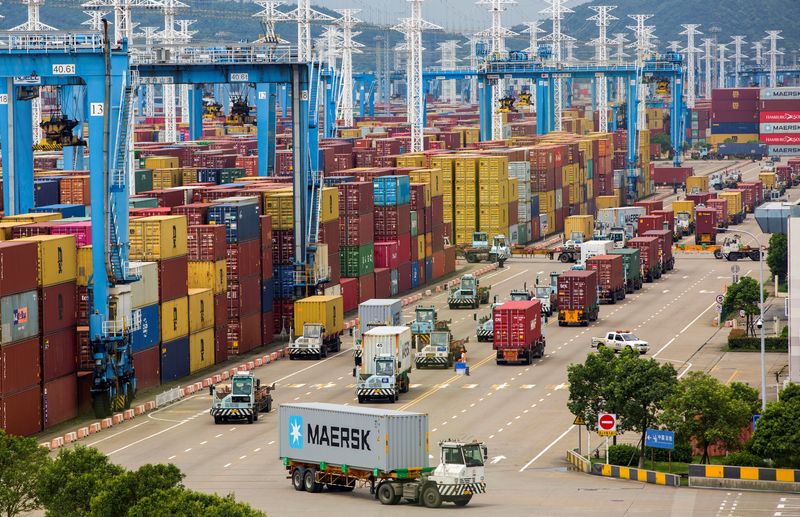BEIJING (Reuters) – China’s exports contracted sharply in March, while imports also fell unexpectedly, both falling short of market forecasts by wide margins. Friday’s customs data shows this, highlighting the difficult task facing policymakers as they try to shore up a shaky economic recovery.
Shipments from China slumped 7.5% year-on-year last month, marking the biggest drop since August last year and compared with a 2.3% drop expected in a Reuters poll of economists. They increased by 7.1% in the January-February period.
The nation’s exporters have fallen on hard times for much of last year due to weak foreign demand and tight global monetary policy. With the Federal Reserve and other developed nations showing no urgency to cut interest rates, Chinese manufacturers could face a further period of challenges as they try to shore up sales of goods abroad.
The China Beige Book survey said recent improvements in business conditions, including improved corporate revenues, profits and capital expenditures, were “more of a return to a mediocre level than a return to a truly mediocre level.”
Analysts warn that Western concerns about China’s overcapacity in some sectors could lead to further trade barriers for the global manufacturing hub.
March imports also fell 1.9% compared to 3.5% growth in the first two months, missing the expected 1.4% increase.
The import data underlined sluggish domestic demand conditions, also highlighted by data on Thursday showing consumer inflation cooled more than expected last month.
China’s economy has gotten off to a relatively solid start this year after policymakers took support measures to boost household consumption, private investment and market confidence starting in the second half of 2023.
However, the Asian giant’s growth remains uneven and analysts do not expect a full-blown recovery anytime soon, especially due to the prolonged crisis in the real estate sector.
Ratings agency Fitch cut its outlook on China’s sovereign credit rating to negative on Wednesday, citing risks to public finances as the economy faces growing uncertainty as it transitions to new growth patterns.
The economy likely grew 4.6% in the first quarter from a year earlier – the slowest in a year despite signs of stabilisation, another Reuters poll showed on Thursday, keeping pressure on politicians to unveil further measures of stimulus.
Some analysts say the central bank faces a challenge as more credit flows to production than consumption, exposing structural flaws in the economy and reducing the effectiveness of its monetary policy tools.
On the fiscal front, China plans to issue 1 trillion yuan ($138.18 billion) in special ultra-long-term Treasury bonds to support key areas. It also raised the 2024 special bond issuance quota for local governments to 3.9 trillion yuan from 3.8 trillion yuan in 2023.

Furthermore, in a bid to revive demand, the government last month approved a plan to promote large-scale equipment upgrades and sales of consumer goods. The country’s economic planning chief estimated that the plan could generate market demand of more than 5 trillion yuan a year.
($1 = 7.2367 renminbi)